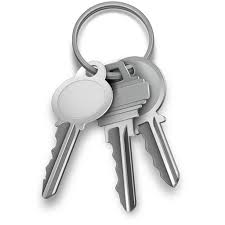
Manage Passwords with Keychain Access
Keychain Access: The days when people had to memorize just one password are long gone. We now juggle dozens of passwords for accessing our iOS devices or logging on to our Macs. Passwords are used to check our email, receive messages, purchase goods, stream music and movies, chat with others, and the list goes on and on. Fortunately, your Mac can store these passwords and automatically fill them in when needed.
Since Mac OS 8.6, the Mac has managed passwords with Keychain, Apple’s password-management system. The Keychain Access application stores a wide variety of items. These items include passwords for email, websites, servers, Wi-Fi networks, network shares, encrypted disk images, secure notes, private keys, and certificates. Whenever you save a password, it’s stored in the Mac’s keychain, whether you’re prompted by an application or you’re saving a website’s password.
The Mac places keychain files in multiple locations, and the contents of these various keychain files are combined into Keychain Access, so you won’t have to worry about where they’re stored.
If you launch Keychain Access, the window will be divided into three panes. The top-left pane lists keychains accessible to you. Below this, in the Category pane, is where the user can choose what he’d like to see, whether that be passwords, secure notes, certificates associated with the account, encryption keys or certificates used broadly by the computer. The largest pane on the right, displays the contents of selected category items. Except in the case of certificates, the user can double-click on one of these items to open a window where the item’s attributes are shown. Attributes such as name, kind, associated account, website or network address, and its access control.
If you’ve forgotten a password and would like to recover it, Keychain Access is the place to go. To learn the identity of a password, select All Items or Passwords in the Category pane, then find the item you want the password for and double-click it. Double-click a keychain item to locate the Show Password option and enable it. Enable it. Next, you’ll be prompted to enter the password for the login keychain. Enter the password and click Allow, and the password will be revealed in the Password field.
If you would like to recover website passwords and are running Safari under Mountain Lion, launch Safari, open Safari’s preferences, and click the Passwords tab. All the websites with saved passwords in Safari will appear in a list.
Enable the Show Passwords option and enter your login password when prompted. Passwords will be listed to the right of each site.
You can also remove website passwords. Just select the site you want to delete and click the Remove button. To remove all remembered passwords, click Remove All.
When you first set up a user account, the login password used for that account is assigned to the login keychain, whereas new passwords are stored by default. The user can enter the password he uses with his account to uncover a keychain item’s secrets. (If someone knows your account’s password, they can access the items in this keychain and then discover your other passwords. If you’re concerned about that, you can change the password for the Login keychain: in Keychain Access select the login keychain and choose Edit > Change Password For Keychain “login”. You’ll be prompted to enter your current password for your user account and then enter and verify a new password.
What happens if you’ve changed the login keychain’s password and, regrettably, forgotten the new password? Apple uses the Triple Digital Encryption Security standard (3DES) to secure the keychain. It’s quite secure for everyday users, and unless you can recall your password, you’re out of luck. It’s strongly recommended to make a copy of the old keychain for safekeeping, in case you remember its password.
If you have multiple Macs, each one has its own login keychain with its own set of passwords.
- More information about Apple product on iGotOffer.com






Facebook
Twitter
RSS